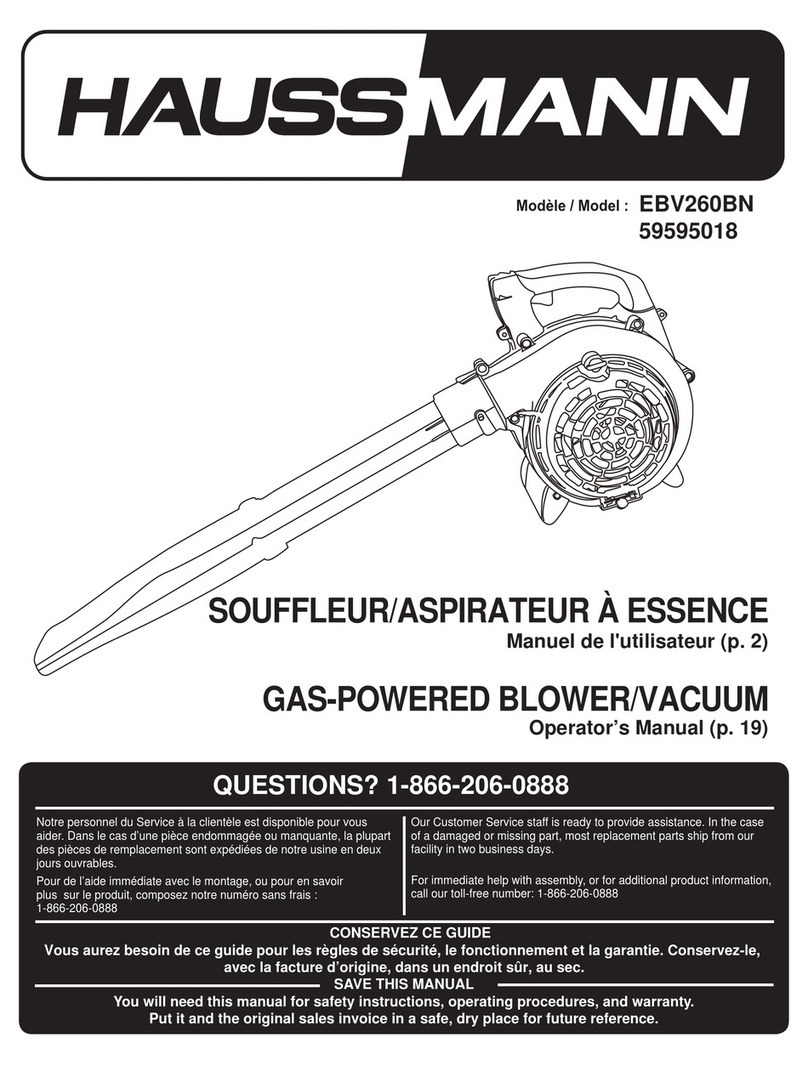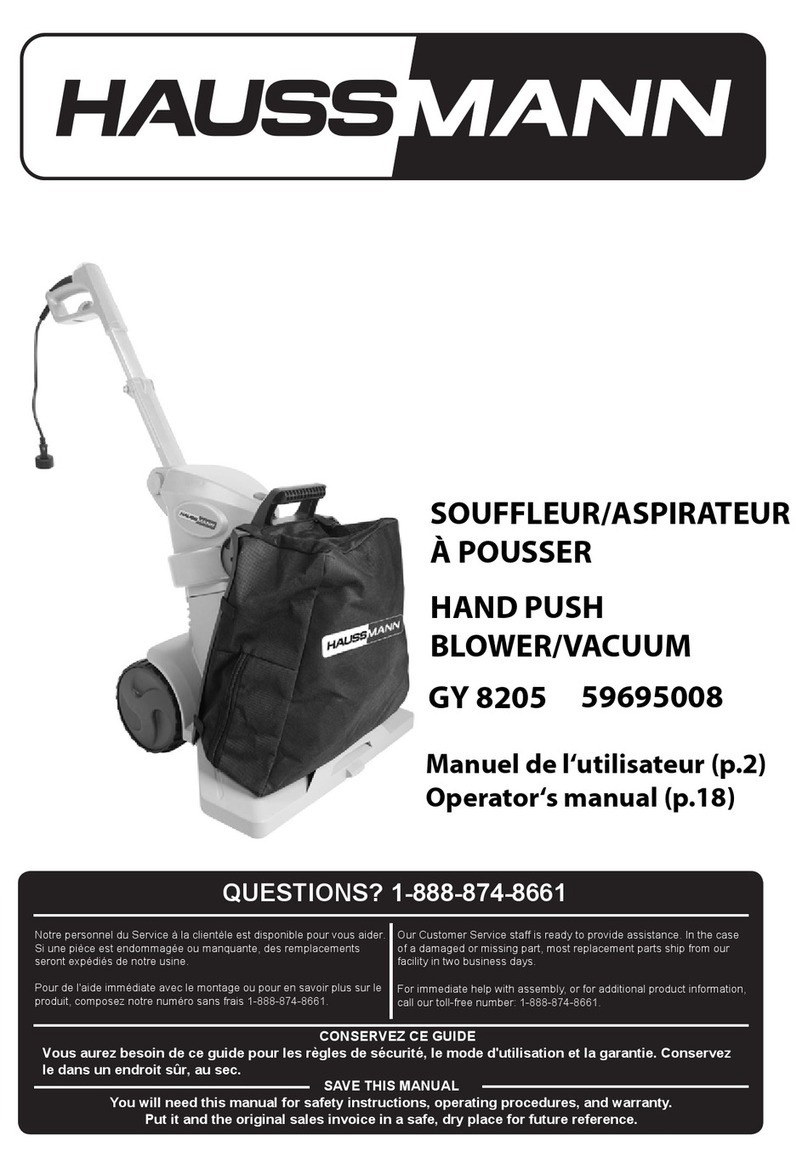
ENGLISH
people or their property.
e) Do not handle the battery pack or the tool with wet hands and
do not use the tool in the rain.
f) Keep all the air intakes and the blower tube free of dust, lint,
hair and other material that may cause a reduction in air ow.
g) Keep a balanced and stable stance while using the tool.
h) Do not switch on the tool in enclosed or poorly ventilated
spaces or in the presence of inammable and /or explosive
substance such as liquids, gases and powders.
i) Do not get distracted and always focus on what you are doing.
Use common sense. Never operate the tool when you are tired,
sick or under the inuence of alcohol or other drugs.
j) Do not operate this appliance with long loose hair or loose
tting jewellery. Tie long loose hair back and remove loose tting
jewellery.
k) Only operate the tool during broad daylight or with adequate
articial light.
l) When the tool is not in use, store it in a dry place and out of
reach of children.
m) After use, remove battery from the tool and check for damage.
If you have the slightest doubts, contract an authorized service
center.
n) Only use the tool according to the instructions given in this
manual.
o) Check regularly that screws are tight.
p) Use only spare parts and accessories recommended by the
manufacturer.
q ) Do not try to repair the tool or access internal parts. For
repairs, contact authorized service centers only
4. Battery Safety Rules
a) Do not charge battery in rain or in wet locations.
b) Do not use battery-powered appliance in the rain.
c) Remove or disconnected the battery before servicing,
cleaning or removing material from the gardening appliance.
d) Do not dispose of the battery in a re, The cell may explode.
Check with local codes for possible special disposal instructions.
e) Do not open or mutilate the battery. Released electrolyte is
corrosive and may cause damage to the eyes or skin. It may be
toxic if swallowed.
f) Exercise care in handling batteries. Not to short the battery with
conducting materials such as rings, bracelets and keys. The
battery or conductor may overheat and cause burns.
g) Be aware of your working environment. Batteries can explode
in the presence of a source of ignition, such as a pilot light. To
reduce the risk of serious personal injury, never use any cordless
product in the presence of open ame. An exploded battery
can propel debris and chemicals. If exposed, ush with water
immediately.
h) Do not crush, drop or damage battery pack. Do not use a

































